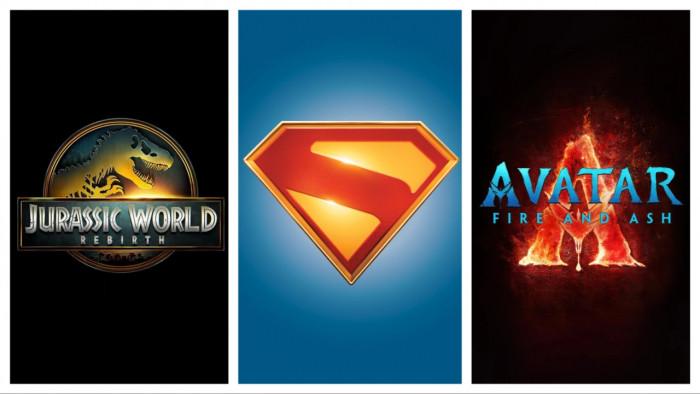As the film industry hurtles toward 2025, experts and fans alike are buzzing with anticipation about the seismic shifts set to redefine the blockbuster movie landscape. From groundbreaking advancements in virtual production to evolving audience expectations and the rising dominance of streaming platforms,2025 promises to be a pivotal year that could reshape how blockbuster movies are made,marketed,and experienced worldwide. This article explores the key trends and innovations driving this transformation, offering a glimpse into a cinematic future that might look very different from what we know today.
Table of Contents
- The Rise of Immersive Technologies Changing Viewer Experiences
- How AI is Revolutionizing Scriptwriting and Production Efficiency
- Streaming Giants Cut Deeper Into Theatrical Release Strategies
- Navigating the Future Audience Expectations for Blockbuster Hits
- Key Takeaways
The Rise of Immersive Technologies Changing Viewer Experiences
As blockbuster movies push the boundaries of storytelling,immersive technologies are rewriting how audiences engage with cinematic worlds. Virtual reality (VR) and augmented reality (AR) are no longer gimmicks but integral tools that allow viewers to step inside narratives,exploring environments beyond the customary screen. These advances create multisensory experiences — from interactive set pieces to personalized plot branches — radically deepening emotional connections and redefining what it means to be a spectator.
Studios are investing heavily in cutting-edge innovations designed to captivate and retain viewer attention amidst fierce competition. key developments include:
- Haptic feedback suits that simulate touch and movement, making action sequences palpably real
- AI-driven adaptive storytelling that tailors movie arcs based on individual responses
- Mixed reality theaters blending physical environments with digital enhancements to dissolve the line between film and reality
These advancements promise a revolutionary shift in visual entertainment, turning passive viewers into active participants and setting a new gold standard for blockbuster movies moving forward.
How AI is Revolutionizing Scriptwriting and Production Efficiency
In recent years, artificial intelligence has swiftly infiltrated the traditionally human-centric realm of scriptwriting, introducing tools that enable creators to generate compelling narratives with unprecedented speed and precision. AI-powered algorithms analyze vast datasets of past scripts, audience preferences, and trending themes, allowing writers to receive real-time suggestions for plot progress, character arcs, and dialog refinement.This data-driven approach does not replace creativity but rather amplifies it, offering a new collaborative partner that reduces the time from concept to polished draft substantially.
Beyond the writing desk, production efficiency is undergoing a radical overhaul as AI streamlines every stage of filmmaking. Automated scheduling systems optimize shoot days by predicting potential delays and resource constraints. Visual effects teams harness AI to auto-enhance scenes, while editing software employs machine learning to assemble rough cuts that closely reflect the director’s style and intentions. Key benefits include:
- Faster turnaround times without sacrificing quality
- Cost savings through predictive resource allocation
- Real-time problem-solving during complex shoots
- Enhanced creative experimentation backed by data insights
Streaming Giants Cut Deeper Into Theatrical Release Strategies
As streaming platforms continue to assert their dominance, traditional theatrical windows are undergoing a radical transformation. Major studios are increasingly collaborating with streaming giants to launch hybrid release schedules, where movies debut concurrently or within days across multiple platforms. This paradigm shift is not merely a reaction to changing consumer habits but a strategic recalibration aiming to maximize revenue streams and audience reach. Industry insiders predict a sharper segmentation,where high-profile blockbusters might favor exclusive theater runs for select markets while offering early access to subscribers worldwide,a move that challenges decades-old box office models.
Key elements driving this evolution include:
- Dynamic Windowing: Flexible theatrical and streaming release windows tailored to specific titles and audience demographics.
- Data-Driven Decisions: Leveraging viewer analytics from streaming platforms to inform marketing and distribution strategies.
- Enhanced Partnerships: Studios and streamers co-producing content to share risks and profits more equitably than ever before.
Navigating the Future Audience Expectations for Blockbuster Hits
As blockbuster films evolve, audiences in 2025 expect a fusion of immersive storytelling and cutting-edge technology that transcends traditional cinema.The rise of AI-driven narratives and real-time interactive elements will reshape how viewers engage with movies, demanding more personalized and participatory experiences. Studios can no longer rely solely on star power or high-budget effects; instead, audiences crave authenticity, diverse portrayal, and stories that reflect contemporary societal shifts. These evolving tastes challenge filmmakers to innovate beyond the visual spectacle, weaving themes that resonate on emotional and intellectual levels.
Future moviegoers will also prioritize convenience and accessibility in their viewing choices. The dominance of streaming platforms combined with enhanced virtual and augmented reality setups suggests that flexible viewing formats and cross-platform availability will be non-negotiable. This shift calls for strategies that integrate supplementary content like behind-the-scenes insights, interactive fan communities, and gamified experiences to sustain interest long after the credits roll. Key expectations include:
- Seamless integration of multi-sensory technologies
- Greater inclusivity in casting and storytelling
- Dynamic narratives adapting to audience input
- Enhanced social media collaboration and engagement
Harnessing these trends will be crucial for studios aiming to capture the hearts and minds of tomorrow’s viewers.
Key Takeaways
As 2025 approaches, the blockbuster movie scene stands on the brink of unprecedented change. From groundbreaking technological advancements to shifting audience expectations, the coming year promises to reshape how stories are told and experienced on the biggest screens. While challenges remain, the evolving landscape offers a tantalizing glimpse into the future of cinema—one where innovation and creativity collide to captivate global audiences like never before. Stay tuned as the blockbuster saga enters its most transformative chapter yet.

